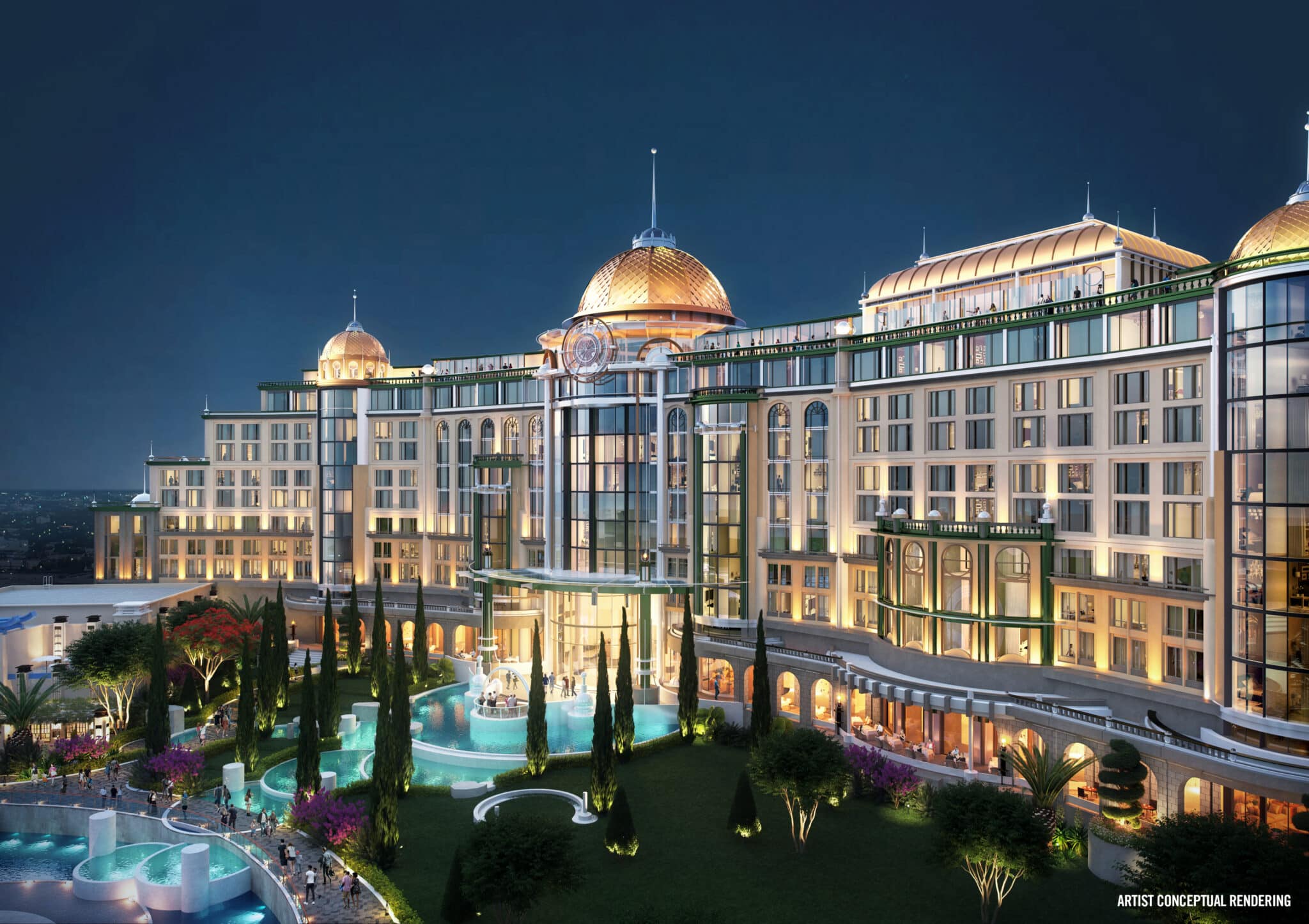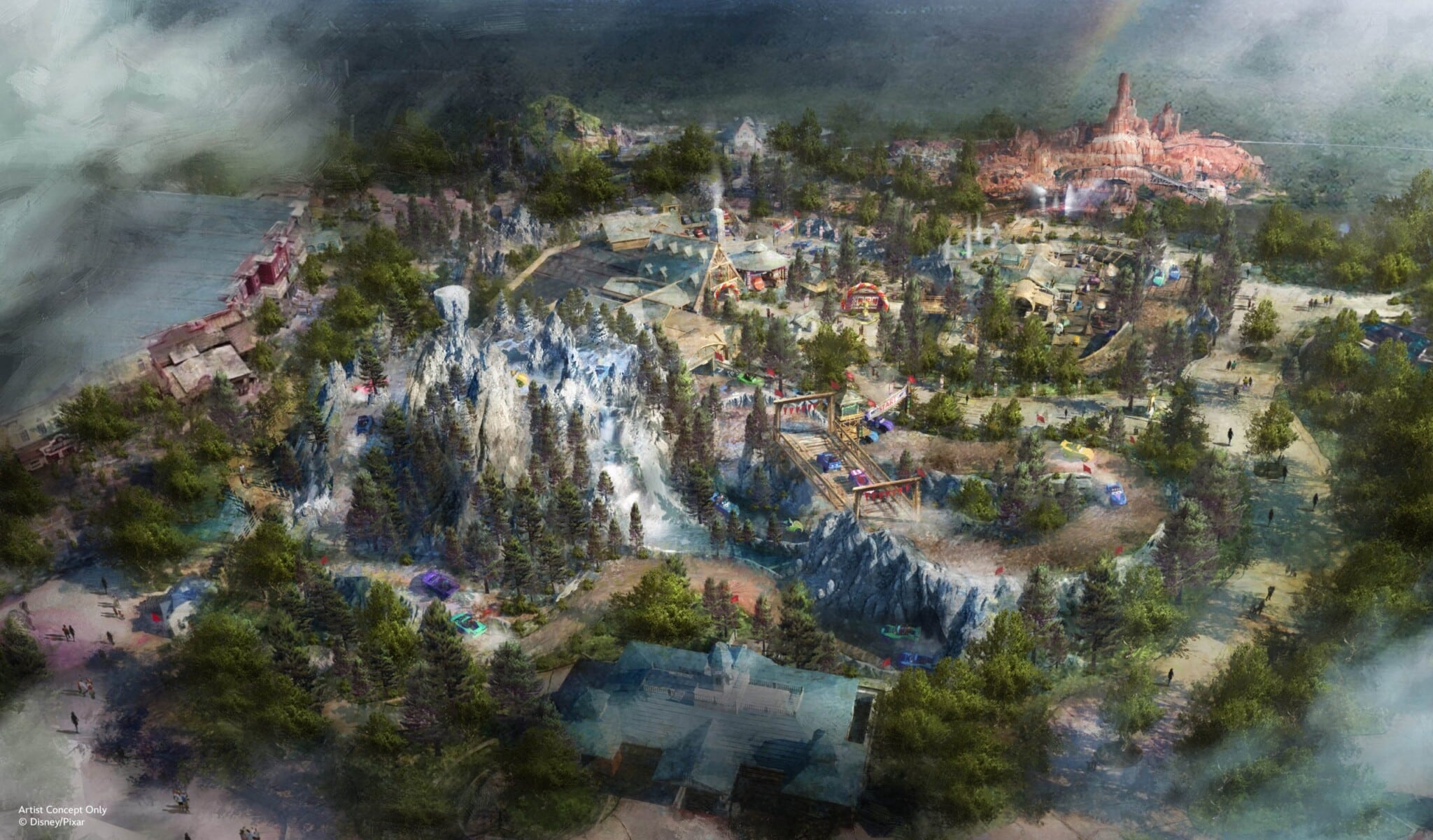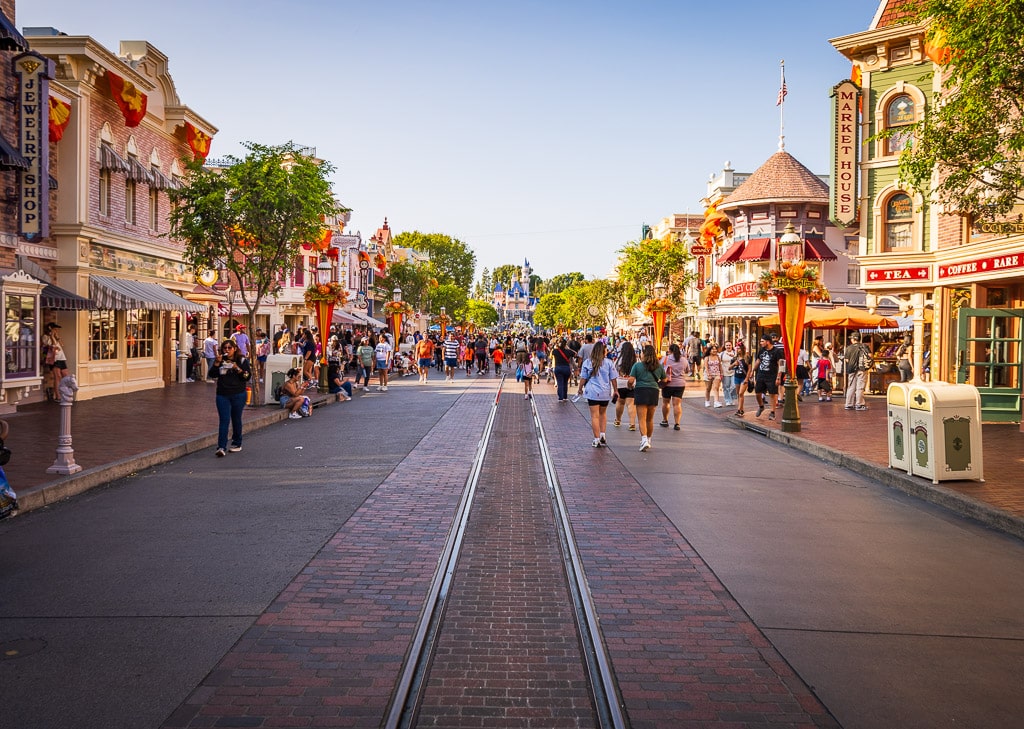
Walt Disney World fans probably get sick of how Disneyland has the superior version of various rides, from Pirates of the Caribbean to Space Mountain. Now Mickey & Minnie’s Runaway Railway can be added to that already long list, as the newest trackless dark ride in Toontown is better than its Disney’s Hollywood Studios counterpart.
Although the ride-through portion of the attraction is largely a clone, we should probably begin with background and our Mickey & Minnie’s Runaway Railway review plus comparisons to other rides. (Feel free to scroll down to the next El CapiTOON Theater photo if you’ve already experience the Walt Disney World version of Mickey & Minnie’s Runaway Railway.)
Located inside El CapiTOON Theater, the attraction itself starts with a screening of the “Perfect Picnic” short, after which guests literally step from the human world directly into the cartoon world in one of the coolest effects of the entire attraction. This perfectly sets the stage for the ride-through portion of the attraction, with guests loading into the (trackless) train ride vehicles.
For reasons beyond me, Goofy is once again the train’s engineer, reprising his role from Main Street Electrical Parade. Don’t get me wrong, Goofy is an expert on a lot of things. You know that. I know that. But uh, not a lot of things. A few things. But railroads?! I don’t know about that.
Unsurprisingly, the attraction switches gears and hits its “something has gone terribly wrong” bump in the scenic road in short order. With that, the attraction delivers upon a common cartoon trope…and the attraction’s name. C’mon, you’ve gotta realize that it wasn’t called “Mickey & Minnie’s Scenic Train Ride Before A Perfect Picnic in the Park” for a reason. And thus starts the Runaway portion of Mickey & Minnie’s Runaway Railway.
While running away (runawaying?) you careen through a series of loosely-connected vignettes in a variety of environments. There’s tremendous range in the settings, and the pacing of the attraction becomes fairly frenetic at this point. The narrative through-line that links the various scenes together is tenuous at best, but the ride nevertheless is very much in keeping with how a cartoon would bounce around from locale to locale.

All of this is aided tremendously by technology. While Mickey & Minnie’s Runaway Railway is heavy on projection mapping and screens, depth and dimensionality are created via the variety of surfaces and the spatial relationships. This is also aided by how the trackless ride vehicles dart around the environments.
Mickey & Minnie’s Runaway Railway’s larger rooms don’t feel cavernous and empty thanks to the dimensional set pieces and other ride vehicles that are present. It’s a seemingly minor thing, but it’s noteworthy when contrasted with other Disney attractions where this is an issue.
Part of me would’ve liked more Audio Animatronics in Runaway Railway, but I can’t say I particularly love the ones that are there. The dimensional renderings of Mickey and Minnie look off, and it’s odd to see Mickey’s nose where his ear should be in 3D. Other characters don’t look much better.
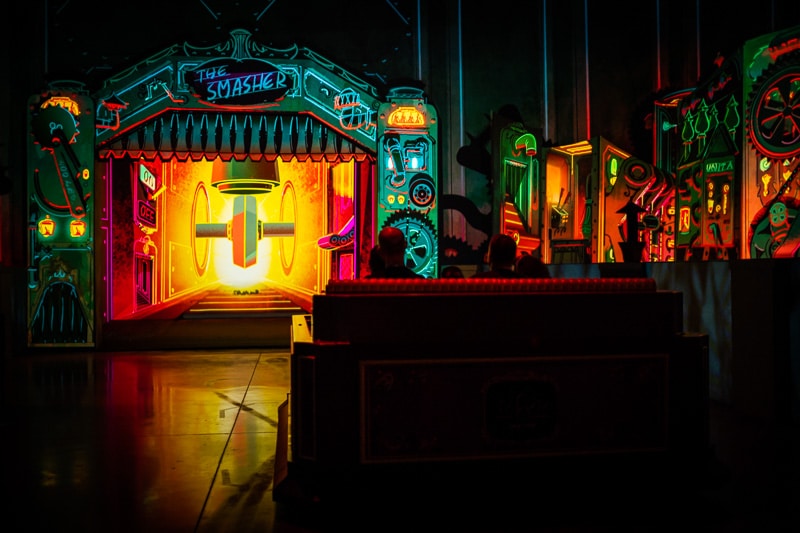
As a staunch advocate of Audio Animatronics, I hate to say it, but the “2.5D” approach of projection mapping on dimensional environments actually works much better than the actual AAs. I’m not sure what the solution here is–there’s probably no perfect way to translate these cartoon characters to dimensional versions. Admittedly, I’d also be criticizing the attraction if there were no Audio Animatronics at all, so it’s something of a no-win scenario for the ride.
Otherwise, there’s a lot to love about Mickey & Minnie’s Runaway Railway. The attraction is highly repeatable, with the experience differing fairly dramatically based upon your ride vehicle. There are also a ton of gags, Easter Eggs, and nods to Disneyland history and Walt Disney’s love of trains.
As the name suggests, Runaway Railway has a real frenzied and frantic approach that makes it easy to miss what’s happening on your first or even second ride-through. I’ve been fortunate enough to ride dozens of times at Walt Disney World, and have found the attraction has grown on me tremendously over the course of the last ~3 years since it opened there as a result of continuing to discover new visuals and gags.
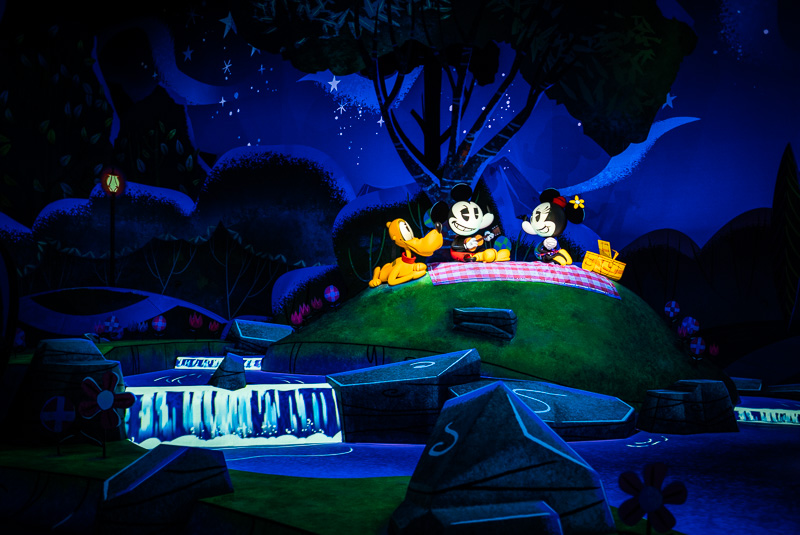
Suffice to say, there’s a lot to take in during Mickey & Minnie’s Runaway Railway. In typical cartoon fashion, it’s pure pandemonium. Even though this is largely accomplished via projections, it works. The visuals are vibrant and the scenery immersive–Runaway Railway captures the chaotic energy of a cartoon and feels like a dimensional version of one of the new Mickey Mouse shorts.
In this sense, Mickey & Minnie’s Runaway Railway reminds us of the other big new ride debuting in Southern California, Mario Kart: Bowser’s Challenge. Both new rides have been criticized for over reliance on screens and technology, among other things. While totally different, we’d argue that the two attractions do an excellent job of capturing the kinetic energy and chaos of their source material. Different means, different end–same animating ideas and energy.

Since we’re starting down the attraction comparison path, we might as well knock out another and draw attention to another attraction that Runaway Railway is nothing like: Star Wars: Rise of the Resistance. As was the case at DHS, this is essentially the follow-up to that, being the next attraction–and another trackless one–to debut at Disneyland after the Galaxy’s Edge headliner.
Don’t get me wrong, I like Mickey & Minnie’s Runaway Railway. But there’s a reason you don’t see the effusive praise here as in our spoiler-free Star Wars: Rise of the Resistance Review. Unlike that, this is not a game-changing attraction, a masterpiece of Imagineering, or one of the greatest attractions of all time.
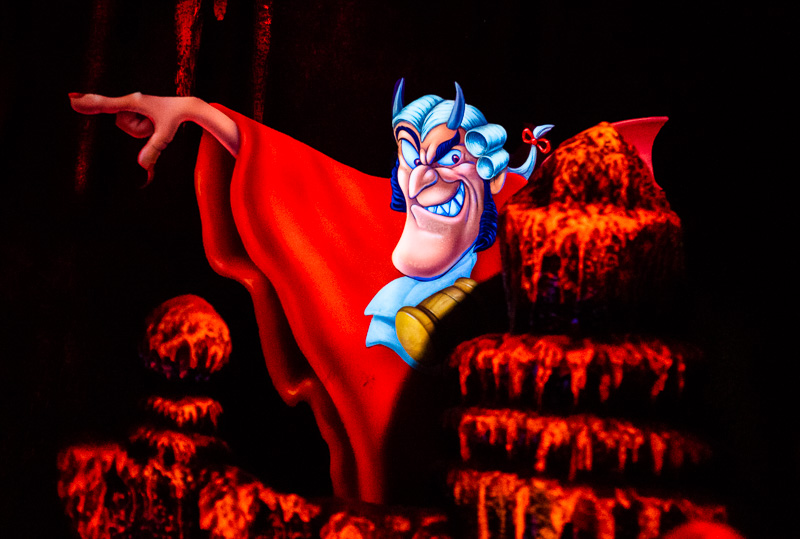
Instead, Mickey & Minnie’s Runaway Railway is the next evolution of Fantasyland dark rides. It has a wow moment or two, but Runaway Railway is mostly iterative–not revolutionary. It takes existing technology that we’ve seen in the last several years and integrates that into a Fantasyland dark ride.
Like those, Mickey & Minnie’s Runaway Railway is charming and fun. It’s not an epic or jaw-dropping adventure, but it doesn’t need to be. A range of offerings is necessary to fill a round out a ride roster, and Runaway Railway is what Disneyland needed for its already stacked slate of attractions.
Perhaps the biggest difference between this and the Fantasyland classics is that Runaway Railway has a healthy hourly capacity and plenty of breathing room–I’d estimate that its show building could house 3-4 different Fantasyland dark rides. Not that it’s a problem with Fantasyland dark rides, but Runaway Railway also should not have major reliability or uptime issues (that’s more a contrast to Rise of the Resistance). Runaway Railway shouldn’t be using that virtual queue for long once the rest of Toontown opens.
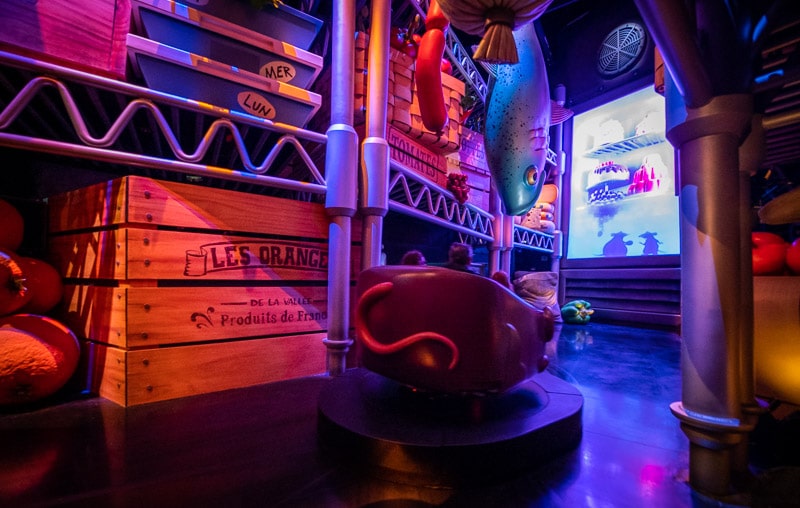
Despite being a spiritual successor to Fantasyland-style dark rides, none are all that close to a comparison. The one that feels most relevant to me is Remy’s Ratatouille Adventure. That may be meaningless to those of you who haven’t visited France, (real world or EPCOT edition), though.
Thankfully, Mickey & Minnie’s Runaway Railway fixes almost all of the technical shortcomings of Remy’s Ratatouille Adventure. With a couple of notable exceptions, that ride is a bit of a one-trick rat, and the illusion is ruined if you notice that you’re parked in front of a gigantic screen. By contrast, Runaway Railway has far more tricks up its sleeve and manages to convey suspension of disbelief via multiple means. The end result is a much more immersive and dynamic attraction that has a distinct personality and charisma.
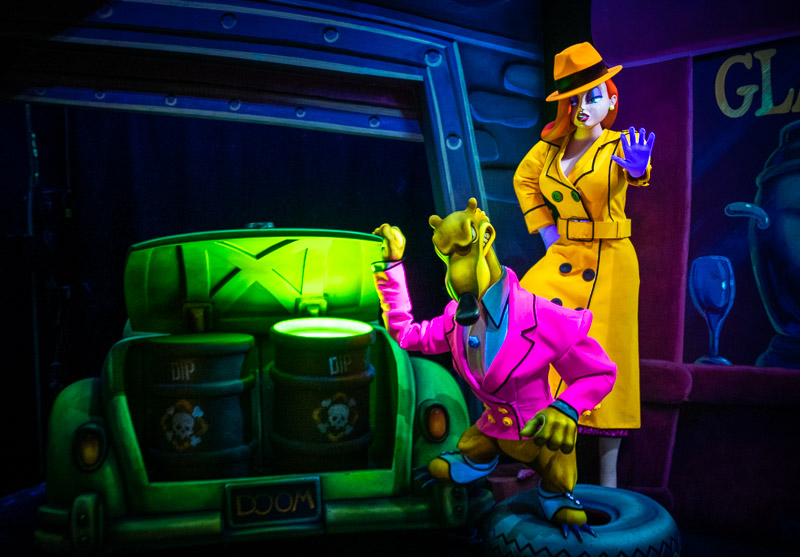
With that in mind, I actually think the most apt comparison is Roger Rabbit’s Car Toon Spin, its next-door neighbor in Toontown. For what it’s worth, this is no knock–I think Roger Rabbit’s Car Toon Spin is criminally underrated, and one of the best dark rides at Disneyland.
The energy, pace, gags, repeatability, etc., are all very similar between Roger Rabbit’s Car Toon Spin and Mickey & Minnie’s Runaway Railway. I’d go as far as to say that Runaway Railway feels like a spiritual successor to Car Toon Spin–how that attraction would’ve been made with the technology of today. On balance, I personally prefer Car Toon Spin…although perhaps I shouldn’t say that before seeing what changes with the reimagined Toontown.
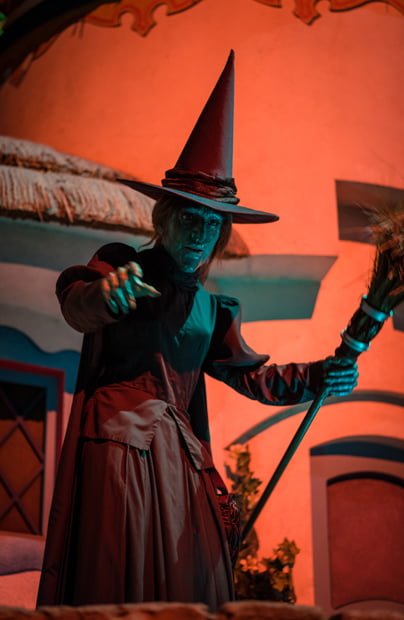
As for why this version of Mickey & Minnie’s Runaway Railway is the superior one, part of it comes down to baggage and surrounding circumstances. At Disney’s Hollywood Studios, the ride is the centerpiece of the park, having replaced Great Movie Ride. That was a classic attraction, right up there with the Backlot Tour as extinct attractions that pushed the envelope. Great Movie Ride was a love letter to classic cinema and Old Hollywood that helped define the identity of the Disney-MGM Studios.
While I understand and accept the reasons for replacing Great Movie Ride, for me, Mickey & Minnie’s Runaway Railway does not surpass it. Even with all of Runaway Railway’s technological wizardry and advancement, Great Movie Ride was better–it had tremendous depth, set design, and was a long attraction bursting with detail.
By contrast, Mickey & Minnie’s Runaway Railway replaces a gift shop and some backstage Cast Member facilities at Disneyland. Don’t get me wrong, it was a good gift shop. But not nearly as good as this attraction.
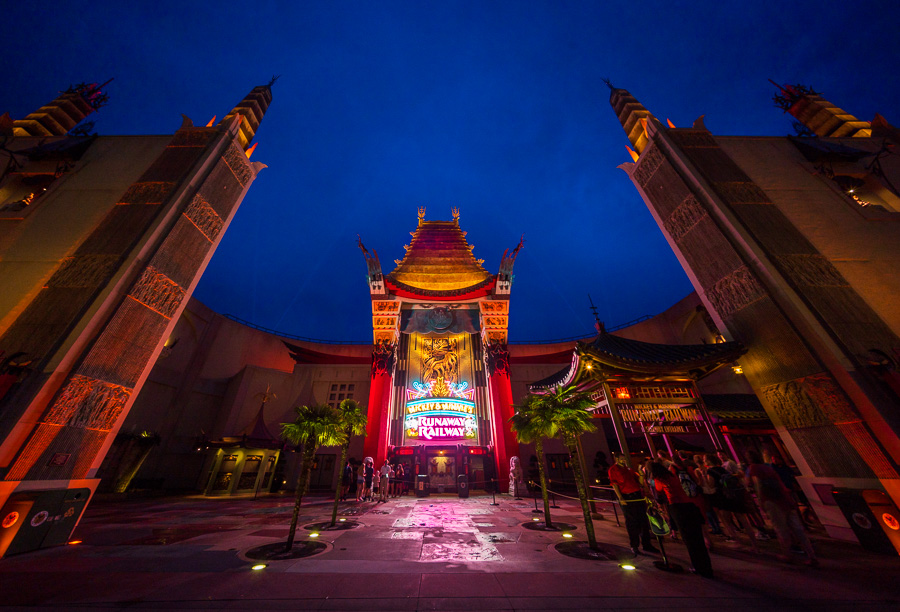
Another difference is in the location and venue. Mickey & Minnie’s Runaway Railway is at the front of the park, visible as soon as you step foot onto Hollywood Boulevard in DHS. That version was built in Grauman’s Chinese Theater, the same building that housed Great Movie Ride.
Although I don’t like that it replaced that attraction, I do like that Runaway Railway reuses the Chinese Theater. It’s an opulent old Hollywood cinema that strikes a playful contrast with the subject matter. It works shockingly well, is unique, and provides an interesting juxtaposition to the cartoon world that guests enter.
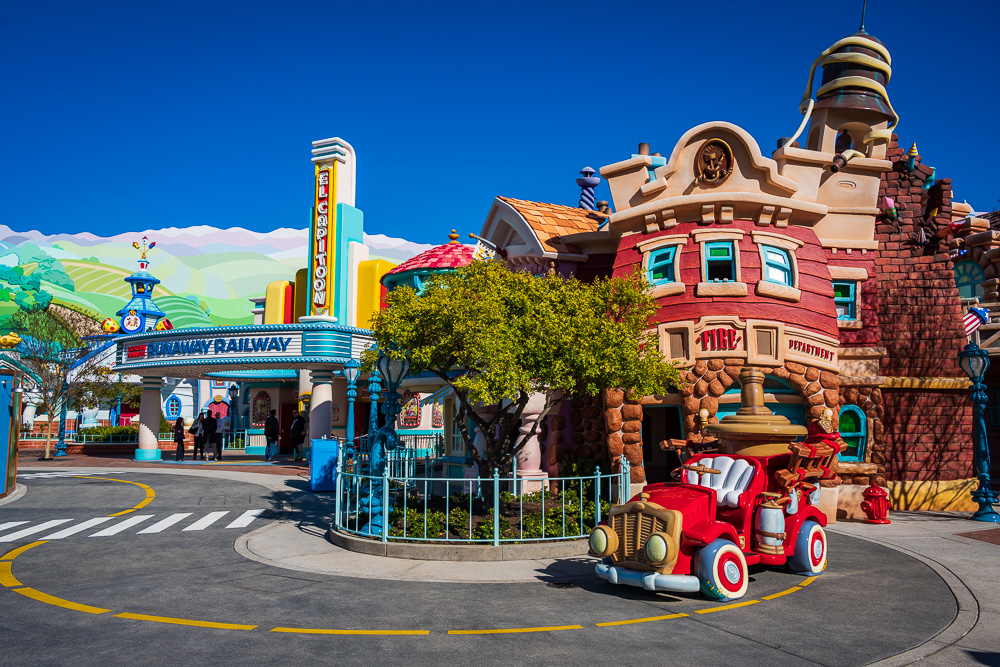
The Disneyland version of Mickey & Minnie’s Runaway Railway is located at the back of the park in Toontown, and is housed inside El CapiTOON Theater. That’s also a riff on an opulent old Hollywood cinema, right down to the Art Deco design underneath all of the toonified artifice. It’s actually cool to see how the design marries real world Hollywood architecture and Art Deco flourishes with typical Toontown hijinks.
Tonally, the two venues are polar opposites. This is more whimsical, and part of the cartoon world through and through. When it comes to the specific venues, there’s no better or worse in El CapiTOON Theater v. Grauman’s Chinese Theater. Just different. Personally, I actually prefer the more serious setting of Grauman’s Chinese Theater, as I think the contrast to the ride itself is sharper and more striking. But part of that could also be nostalgia talking. Either way, El CapiTOON Theater is hardly a downgrade. It’s a really cool home to Mickey & Minnie’s Runaway Railway.
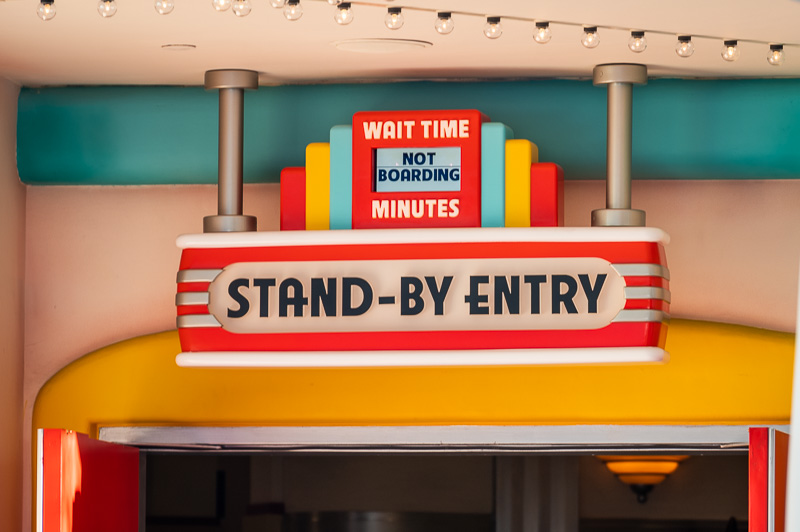
With that said, there’s one huge way that El CapiTOON Theater is superior to its Florida counterpart: the queue. I love the architecture and pre-existing interior design of Grauman’s Chinese Theater, and honestly wouldn’t want it to be any different–but it does prevent some of what’s showcased in the Disneyland version of the queue. That’s the double-edged sword with the sharp contrast of Runaway Railway with the theater it inhabits in Florida.
The end result of leaning into the cartoon style in Toontown is that Imagineering had a lot more latitude with the queue at Disneyland, and it really shows. The end result is something far superior, with the details added to El CapiTOON Theater are fun and engaging. The poster art at the start is really clever, and makes El CapiTOON feel like a real theater. From there, it continues with an exhibit showcasing the evolution of Mickey Mouse.
Rather an over-explaining it, I’ll let the photos of the El CapiTOON Theater queue speak for themselves:
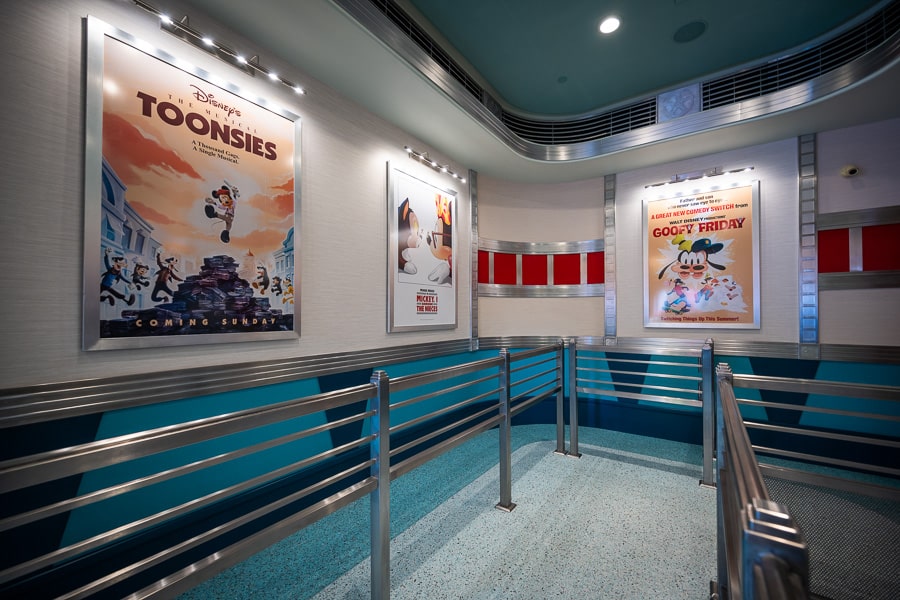
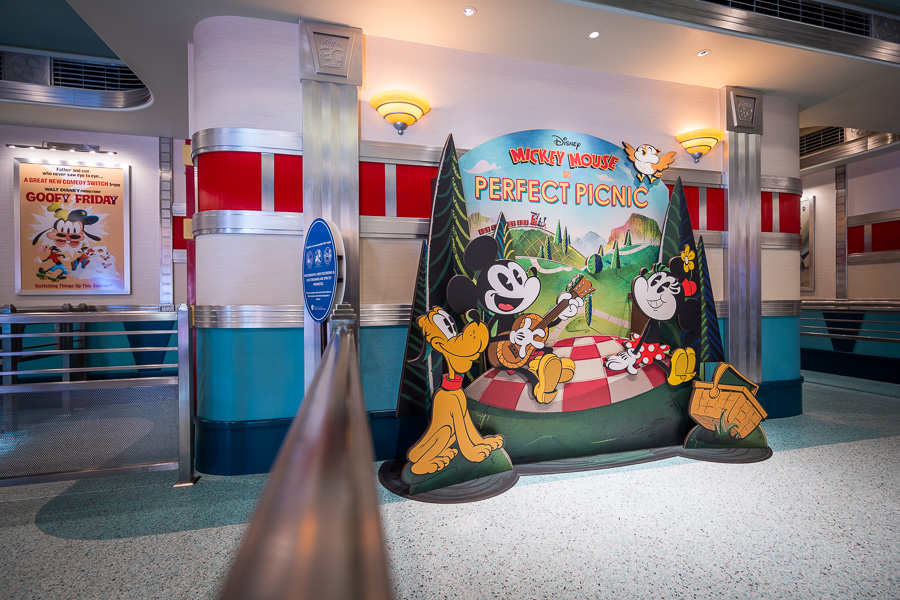
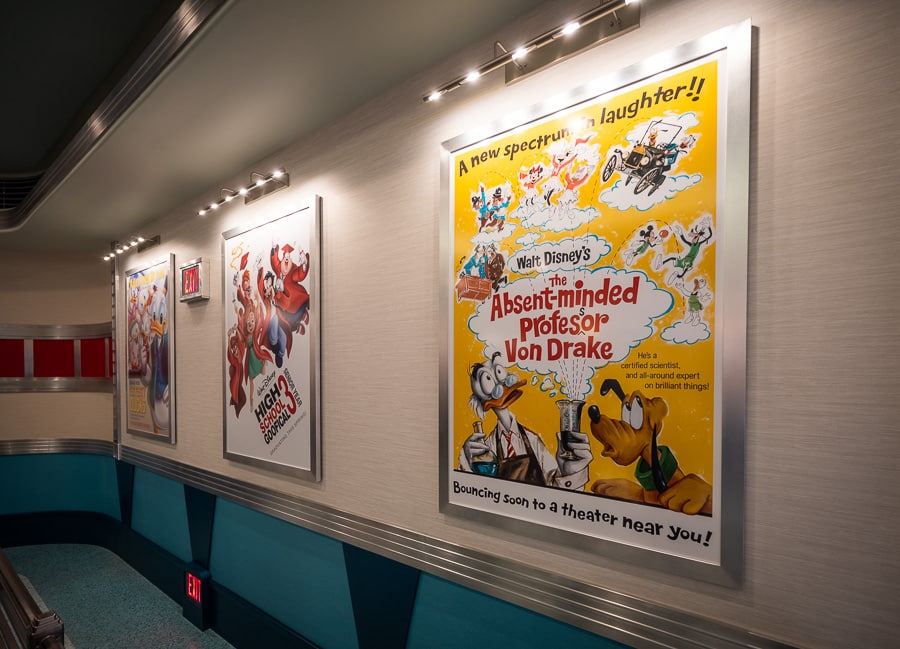
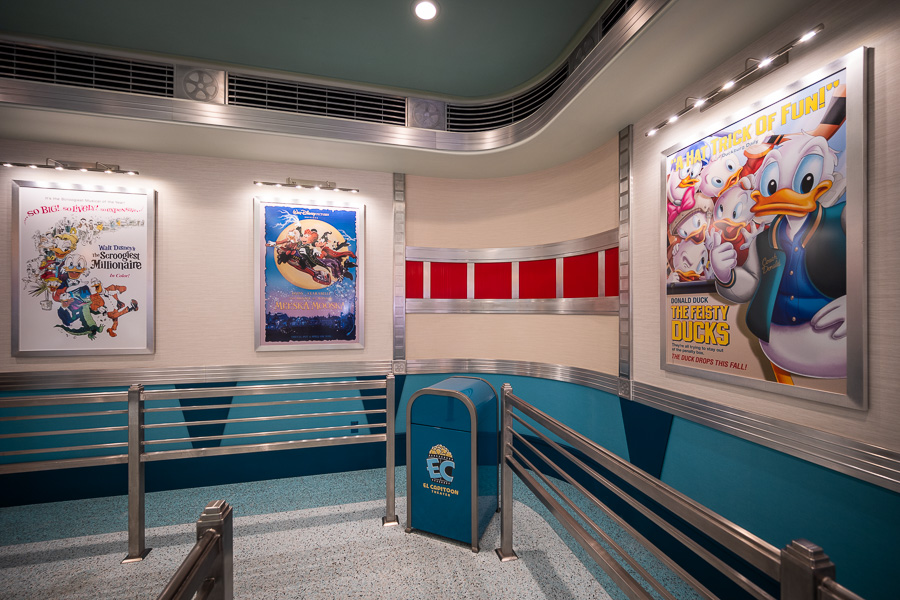
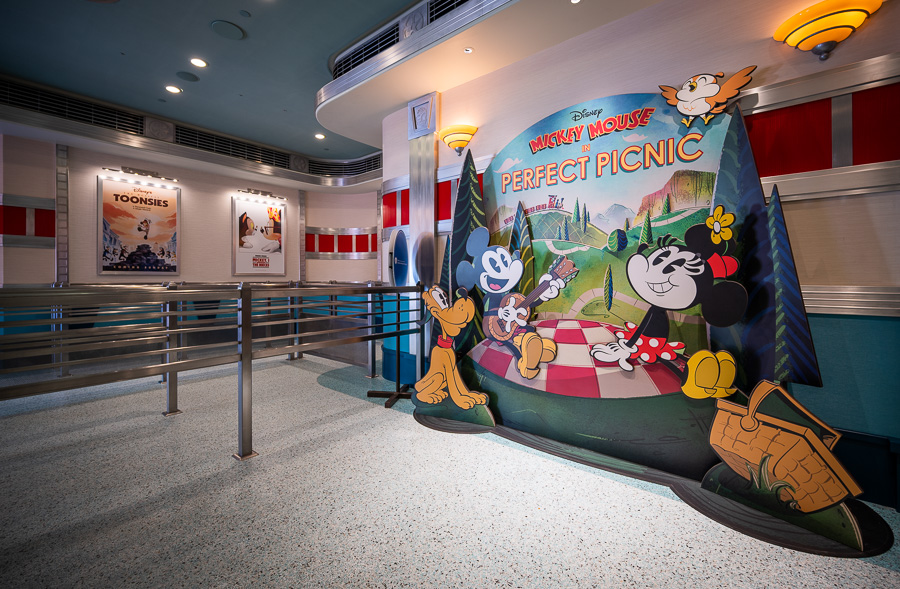
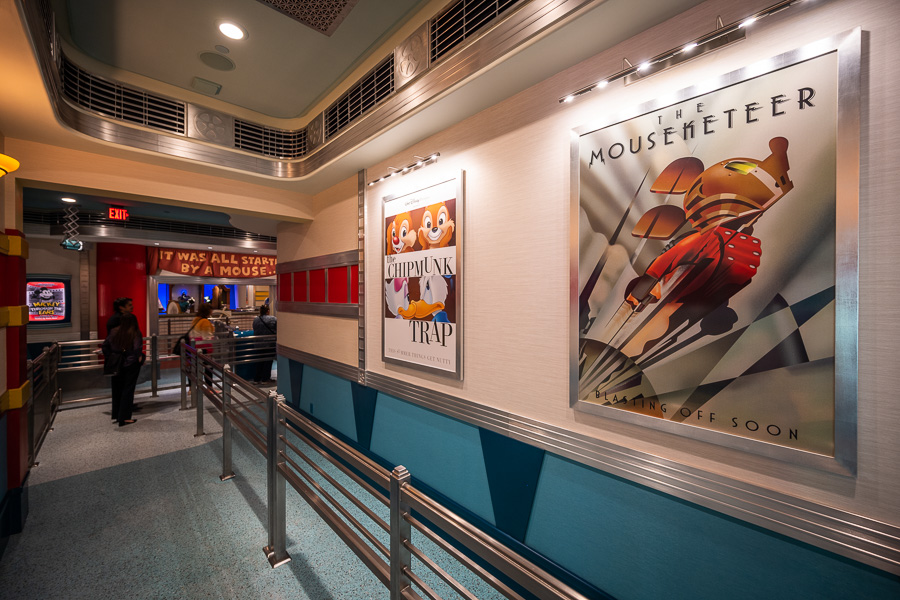

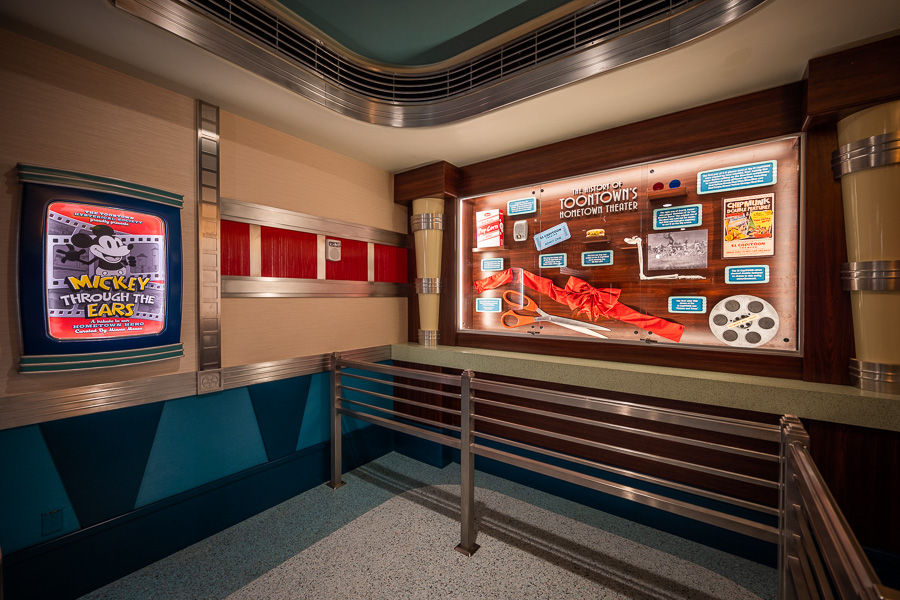


























Then there’s what Mickey & Minnie’s Runaway Railway brings to the table for the reimagined Mickey’s Toontown. The rest of the land has not yet opened, so I’m going to have to make some assumptions based on what existed before and what the transformation will likely bring to the table.
The big thing is that a second major attraction should make Mickey’s Toontown more ‘equal’ to its counterparts around Disneyland. While the land has always been fun and underrated, it has also felt like less of a land than the rest. Runaway Railway along with the other additions will breathe new life into Mickey’s Toontown.

Previously, the land was reasonably popular for meet and greets, but that was otherwise forgotten for a lot of guests. It wasn’t even a big deal that it closed much earlier than the rest of the park for fireworks. Toontown flying under the radar is precisely why we’ve called Roger Rabbit’s Car Toon Spin “criminally underrated” over the years–because it’s a top 3 dark ride, but never receives as much love as its Fantasyland counterparts.
Mickey & Minnie’s Runaway Railway will change that. Not only will the attraction itself have huge appeal, but it’ll draw guests deeper into Disneyland to experience the rest of Toontown. That’s a win for the land and for crowd flow. (Now, if we could just get Disney to connect Toontown with Galaxy’s Edge to help alleviate the Fantasyland crowds!)

Ultimately, that’s where I stand with Mickey & Minnie’s Runaway Railway at Disneyland. It’s a strong attraction that iterates on the classic dark ride formula, and enhances the already-strong existing attraction lineup. Runaway Railway is also a huge asset to Toontown in particular, and gives this fun land more to draw guests in and stand alongside the other areas of Disneyland.
On top of that, being able to build the attraction from the ground up gave the Imagineers the chance to do more with the queue, which is a considerable upgrade over its Florida counterpart. This is a great love letter to Mickey Mouse over the years, and is something the beloved character created by Walt Disney deserves.
Even though I’m personally partial to Grauman’s Chinese Theater, the queue in El CapiTOON Theater puts this version over the top and makes the cloned version of Mickey & Minnie’s Runaway Railway notably better than the original. It’s a shame that it took so long for Disneyland to get a top-tier Mickey Mouse attraction, but this version was worth the wait. From its location in Toontown to the expanded queue, this is now the definitive version of Mickey & Minnie’s Runaway Railway.
As for the ride itself, Mickey & Minnie’s Runaway Railway has a ton of heart and personality, and is an absolute hoot. It succeeds incredibly well as a next-gen dark ride that will offer family friendly fun in a park disproportionately full of thrills. Runaway Railway put a smile on both of our faces and is a ride we’ll do each time we visit. That should speak volumes about its quality and how much we enjoyed it!
Planning a Walt Disney World trip? Learn about hotels on our Walt Disney World Hotels Reviews page. For where to eat, read our Walt Disney World Restaurant Reviews. To save money on tickets or determine which type to buy, read our Tips for Saving Money on Walt Disney World Tickets post. Our What to Pack for Disney Trips post takes a unique look at clever items to take. For what to do and when to do it, our Walt Disney World Ride Guides will help. For comprehensive advice, the best place to start is our Walt Disney World Trip Planning Guide for everything you need to know!
Your Thoughts
Have you experienced Mickey & Minnie’s Runaway Railway? What did you think of the attraction? Any other Disney or Universal rides to which you’d compare Runaway Railway? Where does this rank among the Disneyland attractions for you? Do you agree or disagree with our review? Any questions we can help you answer? Hearing your feedback–even when you disagree with us–is both interesting to us and helpful to other readers, so please share your thoughts below in the comments!



